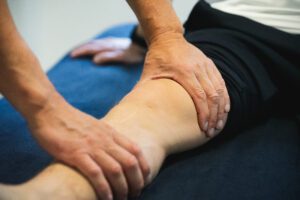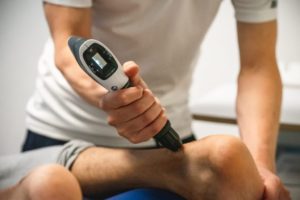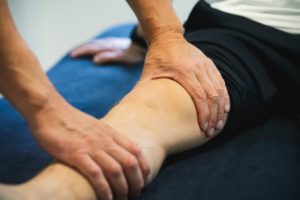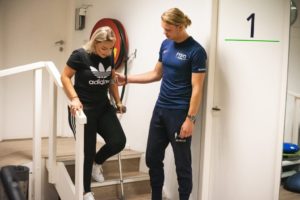Myofascial pain, what is it actually?
Myofascial pain refers to complaints of the musculoskeletal system, which are caused by the presence of myofascial trigger points in one or more muscles. A myofascial trigger point is a painful hardening or “knot” in the muscles that can cause restriction of movement, stiffness, loss of strength and pain.
Myofascial trigger points are often overlooked in musculoskeletal complaints.
The pain can vary from moderate and nagging to stabbing and very intense. It is striking that in many cases trigger points are present in places other than where you feel the pain. The complaints remain within the radiation area of the muscle in question.
Myofascial pain syndrome, what is it?
According to one estimate, 2 million Dutch people suffer from Myofascial Pain Syndrome. The patient suffers from a nagging, pressing or tingling sensation. At certain times, the radiating pain can also be stabbing and very intense. Doctors usually do not recognize this muscle condition. This means that the patient is sent from specialist to specialist with his or her complaints, without the cause of the pain being identified. MPS therefore often remains untreated.
How do myofascial trigger points arise?
A myofascial trigger point can arise acutely (wrong movement, accident) or due to chronic overload. This overload is often related to 'work or habitual attitude' and lifestyle. As a result of this overload, a complex physiological process in the muscle causes a persistent contraction of a group of muscle fibers (a kind of micro muscle cramp). This process is self-sustaining. Complaints can arise and are usually maintained by a complex of factors; such as a combination of overload of one or more muscles (due to work or trauma) with unfavorable conditions such as stress, fatigue.
Sometimes the cause of the complaint is clear to the patient (for example due to a fall), but often the complaints have developed and increased gradually and the cause is no longer known.
Myofascial treatment can also offer a solution for such complaints.
What makes a myofascial trigger point less painful?
• incorporating short rest periods (micro-breaks) during exercise
• slowly stretching the muscle (for example under the hot shower)
• temperature at which the body can relax, pleasant warmth
• physiotherapy, https://iburg.nl/specialisaties/dry-needling/
• Fascia Integration Therapy, https://iburg.nl/specialisaties/myofasciale-technieken/
Intake and examination
First, the pain areas are mapped and the responsible muscles are tested for strength and length and the adjacent joints for ROM. The muscles are then palpated (examined) for painful hardenings.
As a physiotherapist, I know the relationship between the different muscles and their pain patterns. The myofascial trigger points are located in a hardened cord and feel like a local thickening on palpation.
In addition, the decrease in muscle strength, muscle length and ROM is also examined.
Myofascial pain treatment
The therapy will focus on inactivating the myofascial trigger points, causing the tight muscle strands responsible for the increased muscle stiffness to disappear. Blood flow in the muscle will increase and the pain will decrease. The length of the muscle must also be normalized again and ultimately also the strength and endurance of the muscle. Specific exercises will always be given.
Is Dry Needling Painful?
Dry Needling can be experienced as painful, but most people experience it as a kind of heavy pressing feeling.
If the trigger point is punctured, it can cause a characteristic pain, which is often felt in a different place than where the injection is made. The patient recognizes this as his/her complaint.
Are the other fascia treatment methods painful?
Fascia Integration Therapy (FIT) is the mildest treatment for myofascial trigger points and myofascial release technique is more intensive in terms of treatment and therefore a method that suits athletes well.











